#boston senior portrait photographer
Explore tagged Tumblr posts
Text
Curly Hair that Defines Her Look
Cute and wild, her smile and her curls!
“If someone tells you your hair is too big, get rid of them. You don’t need that kind of negativity in your life.” — Dolly PartonSo embrace your wild curls and let the world know that you’re ready for anything!

View On WordPress
#boston event photographer#boston senior portrait photographer#classic portrait#curly hair#dan busler#dan busler photography#fall family portraits#family photographer near me#family portrait ideas#headshot photographer near me#local photographer#Norwood Headshot photographer#photographer near me#professional photographer#walpole headshot photographer#walpole photographer
2 notes
·
View notes
Text

The Boston Public Library - Mind On Photography
The Boston Public Library doesn’t even need justification for making this list—it’s absolutely magnificent. As a wedding venue, this site offers historic architecture and a magical setting right in the heart of the city. There are a few different spots on the grounds you can rent for your special day: party it up in the Boylston Street Building, celebrate in the grand McKim Bates Hall, rent the tea room and lounge, or take over the lovely courtyard. https://mindonphotography.com/my-10-favorite-wedding-venues-in-the-boston-area/
#senior photography cape cod#elopement photographer cape cod#boston wedding photography#engagement photographer cape cod#engagement portraits cape cod#cape cod photographers wedding#graduation photographer boston
0 notes
Text
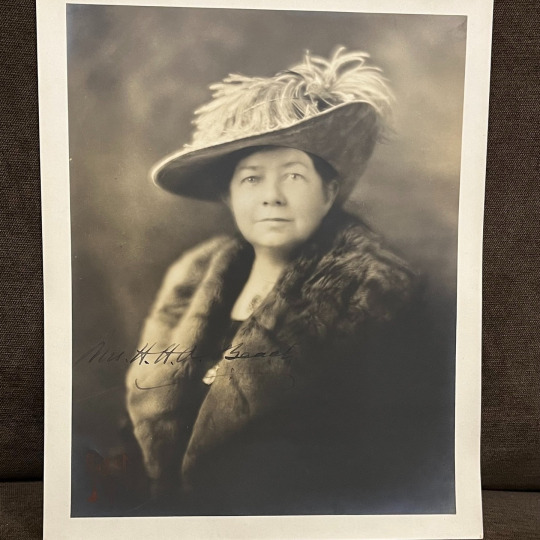
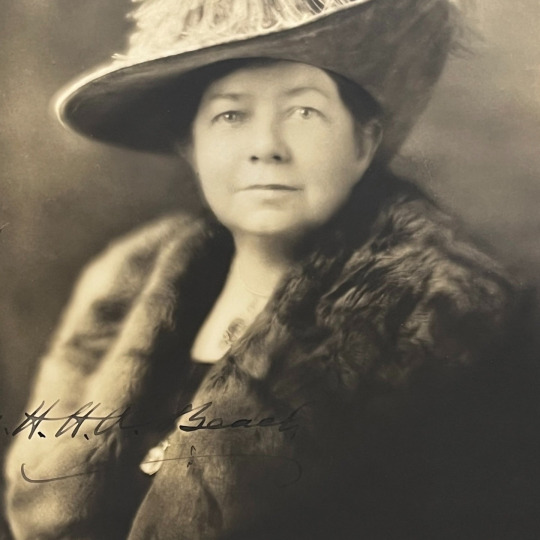
OTD in Music History: Notable American pianist and composer Amy Beach nee Cheney (1867 – 1944) is born in New Hampshire. A historically important musical pioneer, Beach was the first successful American female composer of large-scale “classical” music – her “Gaelic Symphony,” premiered by the Boston Symphony Orchestra in 1896, was the first symphony ever composed and published by an American woman. Against the odds, Beach managed to become one of the most respected and acclaimed American composers of her era. The only female member of the so-called “Second New England School” (alongside such noted American composers as John Knowles Paine, Arthur Foote, George Chadwick, Edward MacDowell, George Whiting, and Horatio Parker), Beach’s writing is primarily in a lush Romantic idiom, although in some of her later works she experimented with more “exotic” or “advanced” harmonies and compositional techniques. PICTURED: A portrait photograph showing the middle-aged Beach, which she signed for a fan. The signature here reads "Mrs. H.H.A. Beach" because, in 1885, Beach married Dr. Henry Harris Aubrey Beach (1843–1910), a prominent Boston surgeon, Harvard lecturer, and amateur singer twenty-four years her senior (Beach was just eighteen on her wedding day). In accordance with the customs and expectations of that era, she thereafter used the name "Mrs. H.H.A. Beach" for all professional purposes. In her own private correspondence, however, she continued to regularly use her given first name. An interesting example (coming in the form of correspondence with another notable American feminist and arts philanthropist) can be seen here:
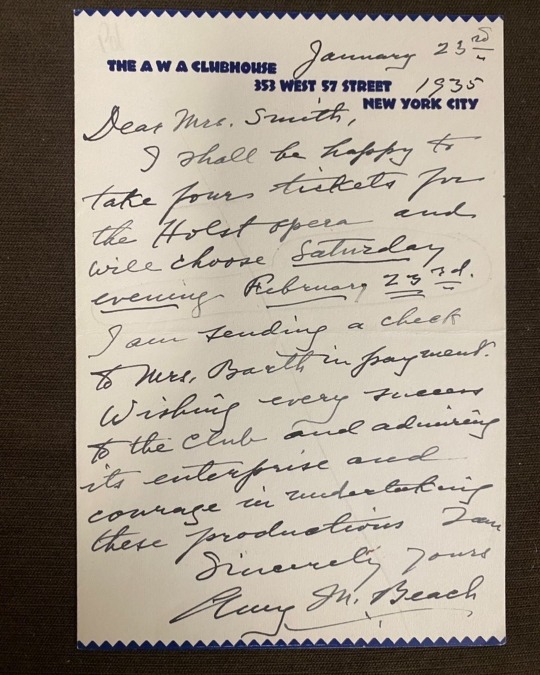
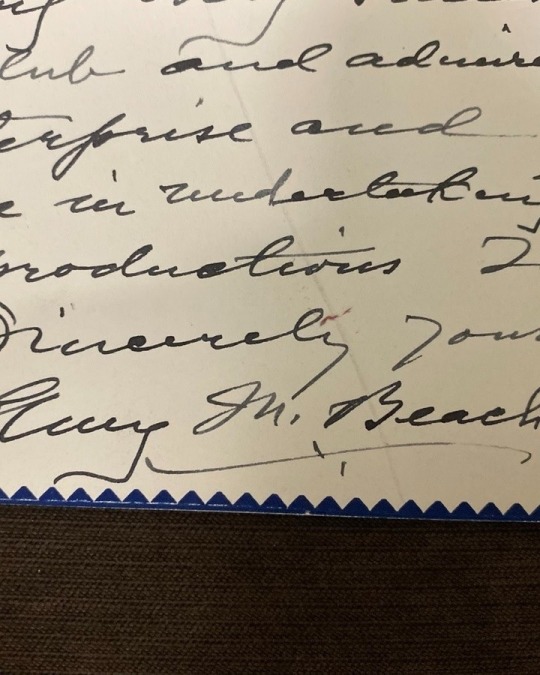
#Amy Beach#classical music#music history#composer#classical composer#classical studies#art music#Gaelic Symphony#Symphony#Chamber music#opera#bel canto#aria#diva#prima donna#maestro#chest voice#classical musician#classical musicians#classical voice#classical history#historian of music#Piano Concerto#Piano#Concerto#Concert#Sonata#songs#musician#musicians
2 notes
·
View notes
Text






AS SEEN ON TV!
#boston#senior portraits#portrait photographer#boston model#fashion#style#lifestyle#new england patriots#cheerleader
4 notes
·
View notes
Text
Photographs and Text
There was a general sense in my graduate program at New England College, that text is somehow to be feared and avoided when it comes to photographic art—that in some ways it is too overbearing for the kinds of delicate and nuanced images we were trying to create.
I think that my colleagues were reacting in part to what we might call “captioned” photographs and what Roland Barthes calls “anchorage” text—text that grounds the image but does not enhance it. I understand the concern. However, there is another kind of text—what Barthes calls “relay” text—text that represents ideas that are not readily apparent in the image. Relay text moves the story along (as in a cartoons and comic strips) or creates an argument that is different from the one you might imagine when you first look at the image.
In creating my photographic project, Pretty Sick, I was influenced by several photographers who use relay text—particularly Shirin Nashat, Lorna Simpson, and Duane Michals.
Before discussing these photographers, let’s consider two facts that may be outside a Eurocentric frame of reference: Often religious art in the Islamic world consists of writing, and Islamic calligraphy is also based on picture making. It combines the two forms seamlessly in the same way that photography literally means “writing with light.” Consider the work of Persian artist Shirin Neshat, whose photographs have informed my own text-based images.

Shirin Neshat (Iranian American, b. 1957), Nada (Patriots), from The Book of Kings series, 2012; ink on LE silver gelatin print, 60 x 45 in. (credit: Gladstone Gallery, New York).
We can also consider other contemporary artists who use text such as, Lorna Simpson’s photograph, Waterbearer.
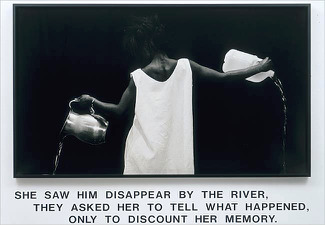
Lorna Simpson (American, b. 1960), Waterbearer, 1986; gelatin silver print with vinyl lettering, 59 x 80 x 2 ¼ in. ICA, Boston (© Lorna Simpson).
The photo elegantly stands on its own and is not simply illustrative of the sentence below it. This self-sufficiency exemplifies the most important way in which text and image must work together���namely, they must complement each other. They cannot be redundant. They are two signifying systems that work together to make a whole.
Simpson presents an image that at first seems timeless and classic—a woman wearing a simple white dress, pouring water from an old-fashioned metal pitcher—but then immediately draws us into the contemporary world by including a plastic jug. She is making herself available as a witness even as her testimony is being disregarded.
As part of my study of this image, I recreated Simpson’s Waterbearer. Like the woman in Simpson’s photo, I am standing in front of a black background, my back is turned to the camera, and I am pouring water out of a metal pitcher. But I am wearing a pink hospital gown instead of a white dress, and I am holding a bouquet of pink flowers. Beneath the photo there is text pressed onto the wall that reads: “There is a fashion to illness.”

Nancy A. Nichols. Self-Portrait in Hospital Gown, 2019; digital file (photo credit: Sheridan Kahnemann).
Duane Michals is another photographer I have studied during my time at NHIA/NEC. His work includes photographs with handwritten stories in the borders—what the photographer and New Yorker writer Siobhán Bohnacker describes as “fictionettes.”

Duane Michals (American, b. 1932), A Letter from My Father, 1960–1975; Gelatin silver print with handwritten text, 6 9/16 x 10 in. Carnegie Museum of Art, Pittsburgh (credit: The Henry L. Hillman Fund, © Duane Michals).
Think of it this way: If a caption represents words that ground a photograph, then the artist’s text works to change the meaning of the photograph. Letter from My Father is about the letter that Michals’s father promised to write to him but never did. In that sense, it is about the mystery and secrets of our parents’ lives and the pain of broken promises. It is the text in conjunction with the photo that makes this point clear. I copied Michals’s style to create my own image about the gap between the real and the imagined experience of illness.

Nancy A. Nichols, Self-Portrait in Hospital Bed with handwritten text, 2019; digital file (photo credit: Jacob L. Kotlier).
In a 2014 interview in The New Yorker, Michals explained the idea behind what he calls his “prose portraits”:
I have a new concept. I call it the “prose portrait.” A prose portrait doesn’t necessarily show you what someone looks like; it’s not a line-for-line reproduction of a face. A prose portrait tells you what the nature of the person is about . . . My writing grew out of my frustration with photography. I never believed a photograph is worth a thousand words. If I took a picture of you, it would tell me nothing about your English accent; it would tell me nothing about you as a person. With somebody you know really well, it can be frustrating. Sixty per cent of my work is photography and the rest is writing. (Michals and Bohnacker)
I have to agree with Michals. Even though I’ve spent a lot of my life working with visual imagery—including studying film, working in television, and now studying photography—the image alone has always been a very difficult thing for me to decode. It is in my nature to want more, a libretto if possible—something that adds context and resonance but doesn’t give the whole story away.
For that reason, text is an important part of my project—not simply because I am a writer by profession, but also because this project, which I’ve called Pretty Sick, is an argument. In the same way that Felix Gonzalez Torres used candy to dramatize the AIDS crisis in his Portrait of Ross or Steve Locke used billowing yards of glorious fabric to draw attention to violence against black men in the Three Colors of Freddy Gray, my photos seek to lure the viewer into contemplating the ways that illness can be manipulated by pharmaceutical companies, polluters, and politicians using colorful self-portraits. But for six of my pieces, that message would be incomplete and not as effective if they did not include phrases and sentences of letterpress text. For example, Self-Portrait in Hospital Gown with Hydrangea.

Nancy A. Nichols, Self-Portrait in Hospital Gown with Hydrangea, 2019; digital file.
Nancy A. Nichols is a writer, editor and photographer. A former senior editor at The Harvard Business Review, she is the author of Lake Effect: Two Sisters and a Town’s Toxic Legacy.

https://www.instagram.com/nnabc/
About the LHNE Collective
#photography#critical theory#art theory#Duane Michals#Lorna Simpson#shirin neshat#image text#original photographers#imiging#photographers on tumblr
33 notes
·
View notes
Text
Life Is a Drag / ‘Life Is Drag’ @ 3S Artspace

Sham Payne, Courtesy of the artist and 3S Artspace
I miss drag.
Miss performance, miss creativity, miss community, and maybe most of all, I miss costumes.
Life Is Drag—a virtual exhibition at 3S Artspace celebrating New England’s alt-drag scene—reminds me of the best of these things. And not in a way that feels hollow, like a desolate bedroom Zoom rave. The exhibition elicits an unexpected joy, like digging up a time capsule or running into a childhood best friend. A welcome reminder of the happiest moments from “before.”
Life Is Drag is the most recent project by multimedia artist (and absolute badass) Rachel Rampleman, whose profiles of female bodybuilders, burlesque dancers, latex maskers, and toddler pageant queens magnify the performative aspects of gender. Her subjects redefine spectacle, pushing presentation to the extreme, yet their portraits never venture into voyeurism. Rampleman graces each collaborator with a divinely empathetic eye, making her the perfect candidate to pull off an authentic, compelling exhibition about the people behind drag.
During a winter residency at Portsmouth, NH’s 3S Artspace, Rampleman collaborated with 21 of New England’s finest (and freakiest) performers to capture their fresh approaches to drag. While the physical exhibition of these videos, interviews, and photographs planned for April 10-May 31 was halted by the Coronavirus crisis, Rampleman is premiering these works in a digital version of the show at galleryat3s.org, now on view through June 4.
Serendipitously, the project is perfectly suited to live online. While some artworks lose something in the digital form, Rampleman’s videos somehow become stronger, more focused. Without the distraction of a gallery attendant looking over your shoulder or the time constraint of your nearing lunch plans, it’s easier to truly dive into the performances. Whether you choose to binge the whole lot in one sitting or savor a few each day, the ~3 minute routines feel sacred, special, like private concerts.

Zayn-X, Courtesy of the artist and 3S Artspace
Be it opulent glamour or dark humor, spoken word or comedy skit, the exhibition covers every drag niche imaginable (and a few you’d never dare to imagine), from the grotesque horror of Zayn-X’s hair-raising body modification (Spoiler alert: There’s a staple gun involved.) to Bunny Wonderland’s banishing ritual likening drag shows to religious ceremonies, to Kitty Willow’s Us-themed dance set to Carly Rae’s “Cut To The Feeling,” complete with scissors and cut paper chain.
Life Is Drag masterfully counters the notion that drag is one-size-fits-all. Drag is not a monolith, although it’s often portrayed as one (Hey, RuPaul!)—a sentiment proven by Rampleman’s collaborators, diverse in nearly every aspect. The group includes an immunologist, a high school senior, an ex-Navy officer, a Two-Spirit Passamaquoddy activist, and a Boston-based father to 46 drag sons, to name just a few. And much to my delight, performers of all gender identities and presentations are represented—Yes, finally, an exhibition with drag kings!
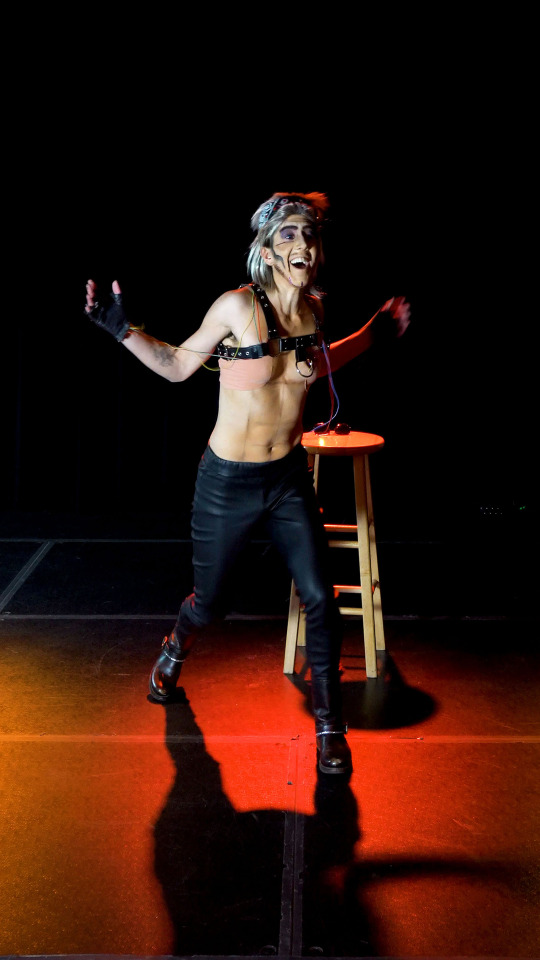
Bender Bluefish, Courtesy of the artist and 3S Artspace
When I’d originally planned to review Life Is Drag back in February, all I could think about was how exciting it’d be to see a thoughtful exhibition about drag make it into a respected gallery. To see an art form so often pushed underground, relegated to the basement or the dive bar, presented to the larger public in a considerate (but still fun!) way. To bring drag performers across New England together, and to invite newcomers into their world. Rampleman and the team at 3S (including Bunny Wonderland, the aforementioned ritualist and 3S’s program manager) planned a holistic schedule of events to welcome 3S’s community into the drag world and the drag community to 3S—showcases, bootcamps, campy movie screenings, and more.
While mourning these events, I find myself even more grateful for the exhibition now because it gives something precious back to our community. We all need a little spectacle in our lives right now, and Life Is Drag delivers when it’s most needed. The exhibition is an invaluable reminder of queer joy, queer innovation, and queer adaptability.
At a time when there’s not much to look forward to (Dare I say it...Life is a drag.), I’m thankful we still have drag.
1 note
·
View note
Photo

Meet Dr. Albert St. Germain
Restorative and family dentist Dr. Albert St. Germain is a high achiever who keeps himself too busy to rest on his laurels! He attended the State University of New York at Buffalo School of Dental Medicine, earning his Doctor of Dental Surgery degree. While there, he was elected to Omicron Kappa Upsilon, the national dental honor society. He also received an award in his senior year for outstanding performance in dental anesthesia and served as the vice president of his class. In addition, he was the editor of the combined dental and medical school yearbook, The Medentian.
During his 50-plus-year career, Dr. St. Germain has always participated in forward-looking studies in order to keep abreast of the many changes occurring in dentistry. In particular, he has pursued advanced training in dental implants. He has received training in the Teeth in a Day®️ protocol for delivering implant-retained fixed dentures. A member of the American Academy of Implant Dentistry, he completed advanced training in implant dentistry at the Engel Institute in Charlotte, NC.
Dr. St. Germain has served as a clinical instructor at Tufts University School of Dental Medicine, which improves the overall experience and outcomes for our patients. With direct access to the latest and greatest treatment options and methods, our team is able to provide a level of care that is unique and highly beneficial.
He still enjoys learning the latest treatment techniques from others. He regularly attends Yankee Dental Congress given annually in Boston. His most recent courses include advanced shade taking, minor tooth movement, advanced endodontics, and portrait photography. He has reached the Masters level in the Dental Boot Camp program.
Other programs he has attended include:
TMJ residency at the Gelb Center at Tufts University School of Dental Medicine
Advanced training in prosthodontics at the Pankey Institute
Advanced endodontic training with Drs. Steven Buchanan and John West
Esthetic training with Dr. Ross Nash and Dr. Larry Rosenthal
In keeping with his philosophy of providing his patients the highest level of care in the most technologically advanced environment, he founded and built Merrimack Valley Dental Care, one of the largest and most technologically advanced dental practices in New Hampshire. He enjoys treating all his patients but is especially passionate about complex cases requiring restoration of smiles to full form, function, and beauty.
His professional affiliations include:
American Dental Association
New Hampshire Dental Society
Greater Manchester Dental Society
Valley District Dental Society
American Academy of Implant Dentistry
Phi Eta Sigma, undergraduate honor society
Omicron Kappa Upsilon, the national dental honor society
Outside of work, Dr. St. Germain is a licensed private pilot and an avid photographer. He also enjoys building computers for home, gaming, and office use.
1 note
·
View note
Text




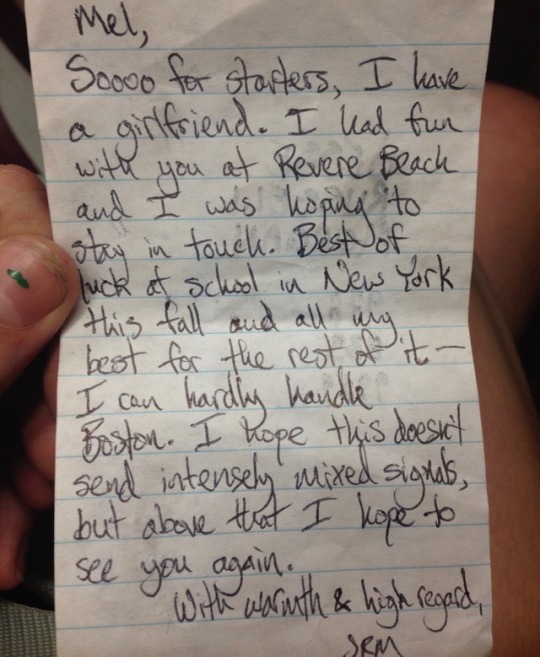
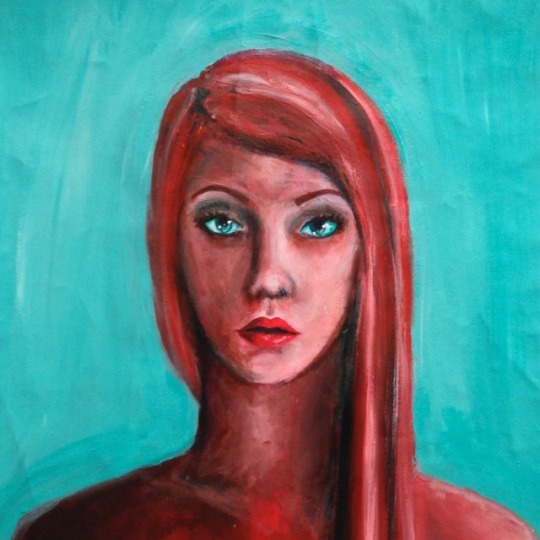

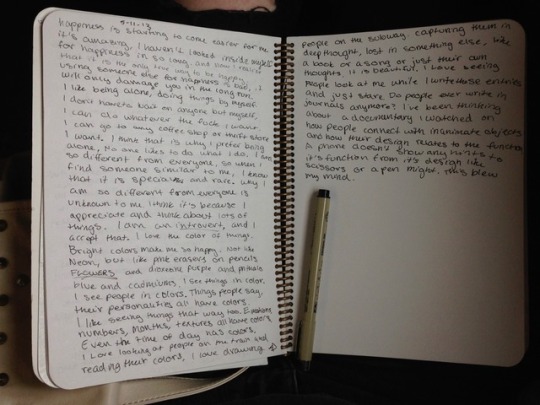


This is a random super personal post but- I turned on my 2011 MacBook today to search for a document but ended up looking through my old photos from high school instead. These photos were all taken over the summer of 2013. I had just broken up with my first boyfriend, started my first real-ish job on a food truck in Boston, and graduated high school by a hair’s breadth. My senior year consisted of eating lunch in the bathroom alone (sometimes the art room if it wasn’t locked), self harming (whether scratching my arms raw during class or slashing my thighs with an xacto knife at 3am), and isolating myself from my family and friends. I had moved out of my mother’s house to distance myself from her abusive (to my mom, my sister, and myself) boyfriend and into my dad’s house... who was never really there.
While living there I thought about death every day. One night in particular- the sky was thundering and the rain was pouring. All I remember is hysterically laughing/crying- I snatched a steak knife from the kitchen at 4am, slashed the wooden counter a few times, and bolted outside into the storm. I remember my sister stepping outside and running over to me, and then waking up the next day with deep gashes in my thighs. It hurt to move my legs for the next couple weeks. I realized that I probably would’ve died that night if it weren’t for my sister.
ANYWAYS
These photos are from the months following that night. I took photographs of everything that sparked the slightest of joyful feelings. I bought a stupid pink skateboard, I started dressing how I wanted, I painted my first self portrait, I wrote down all my feelings and got love notes from random boys. I went alone to museums, coffee shops, book stores, thrift shops, restaurants, to my first show... I did everything by myself- and from that blossomed a happiness that I had never experienced before. I fell in love with life and myself for the first time, and it changed everything. I was at peace. I’m so happy I didn’t take my own life that night. There have been a few rough times in the recent years where I’ve considered offing myself- but I’ve always thought back to this summer and it renews the warmth in my brain.
87 notes
·
View notes
Text
NASA Remembers Astronaut Bruce McCandless II
NASA logo. Dec. 23, 2017 Former NASA astronaut Bruce McCandless II, mission specialist on the STS-41B and STS-31 missions, passed away on Dec. 21, 2017, at the age of 80.
Image above: Official Space Shuttle portrait showing Astronaut Bruce McCandless II, attired in the Shuttle Extravehicular Activity (EVA) Suit with Manned Maneuvering Unit (MMU) attached and American flag in background. Image Credit: NASA. Gallery: Images of Astronaut Bruce McCandless II: https://www.nasa.gov/content/images/bruce-mccandless Biography: Bruce McCandless II: https://www.jsc.nasa.gov/Bios/htmlbios/mccandless-b.html McCandless is perhaps best remembered as the subject of a famous NASA photograph (below right), flying alongside the space shuttle in the Manned Maneuvering Unit (MMU) -- the first astronaut to fly untethered from his spacecraft. His time as an astronaut encompassed much more than that mission, including serving as the Mission Control communicator for Neil Armstrong and Buzz Aldrin's moonwalk on the Apollo 11 mission. "Our thoughts and prayers go out to Bruce's family," said acting NASA Administrator Robert Lightfoot. "He will always be known for his iconic photo flying the MMU." McCandless, a retired U. S. Navy captain, was one of the 19 astronauts selected by NASA in April 1966. He was a member of the astronaut support crew for the Apollo 14 mission and was backup pilot for the first crewed Skylab mission. He flew as a mission specialist on two space shuttle missions. On STS-41B in 1984, he performed the famous spacewalk and on STS-31 in 1990 he helped deploy the Hubble Space Telescope. Of his famous spacewalk, he wrote in 2015: "My wife [Bernice] was at mission control, and there was quite a bit of apprehension. I wanted to say something similar to Neil [Armstrong] when he landed on the moon, so I said, 'It may have been a small step for Neil, but it’s a heck of a big leap for me.' That loosened the tension a bit." Born June 8, 1937, in Boston, McCandless graduated from Woodrow Wilson Senior High School, Long Beach, California. He received a bachelor of science degree from the United States Naval Academy in 1958, a master of science degree in Electrical Engineering from Stanford University in 1965, and a masters degree in Business Administration from the University of Houston at Clear Lake City in 1987.
Image above: Astronaut Bruce McCandless II, STS-41B mission specialist, uses his hands to control his movement above the Earth - and just few meters away from the space shuttle Challenger - during the first-ever spacewalk which didn't use restrictive tethers and umbilicals. Fellow crewmembers aboard the Challenger used a 70mm camera to expose this frame through windows on the flight deck. Image Credit: NASA. He was a co-investigator on the M-509 astronaut maneuvering unit experiment which was flown in the Skylab Program and collaborated on the development of the MMU. He was responsible for crew inputs to the development of hardware and procedures for the Inertial Upper Stage (IUS), the Hubble Space Telescope, the Solar Maximum Repair Mission, and the Space Station Program. McCandless logged more than 312 hours in space, including four hours of flight time using the MMU. Among the awards and honors received by McCandless are the Legion of Merit (1988); Department of Defense Distinguished Service Medal (1985); National Defense Service Medal; American Expeditionary Service Medal; NASA Exceptional Service Medal (1974); American Astronautical Society Victor A. Prather Award (1975 & 1985); NASA Space Flight Medal (1984); NASA Exceptional Engineering Achievement Medal (1985); National Aeronautic Association Collier Trophy (1985); Smithsonian Institution National Air and Space Museum Trophy (1985). He was awarded one patent for the design of a tool tethering system that was used during shuttle spacewalks. Captain McCandless was the son of the late Rear Admiral (USN) and Mrs. Bruce McCandless. Admiral McCandless received the Congressional Medal of Honor for the naval battle of Guadalcanal, Dec. 12-13, 1942. He passed away in 1968. His paternal grandfather, Commodore (later Rear Admiral) Byron McCandless, USN, received the Navy Cross for World War I, and his maternal grandfather, Captain Willis Winter Bradley, USN, was the first recipient of the Congressional Medal of Honor in World War I. Captain McCandless is survived by his wife, Ellen Shields McCandless of Conifer, Colorado; his son, Bruce McCandless III of Austin, Texas and his wife, Patricia; his daughter, Tracy McCandless, of Islamorada, Florida, and two granddaughters, Emma Rose and Carson Clare McCandless of Austin. He is also survived by a brother, Douglas M. McCandless of Washington, D.C., and two sisters, Sue M. Woodridge of Texas, and Rosemary V. McCandless of Dallas, Texas.
Astronaut Bruce McCandless II Floats Free in Space
Video above: On Feb. 7, 1984, during the Space Shuttle Challenger’s STS-41B mission, NASA Astronaut Bruce McCandless II makes the first, untethered, free flight spacewalk in the Manned Maneuvering Unit. Video Credit: NASA. Images (mentioned), Video (mentioned), Text, Credits: NASA/Sarah Loff. R.I.P., Orbiter.ch Full article
39 notes
·
View notes
Text
Hyperallergic: Art Movements
Norman Rockwell, “Shuffleton’s Barbershop” (1950). The painting is one of two Rockwell’s owned by the Berkshire Museum (image via wikiart.org)
Art Movements is a weekly collection of news, developments, and stirrings in the art world. Subscribe to receive these posts as a weekly newsletter.
According to Le Monde, authorities are investigating three individuals following the abrupt closure of the Amedeo Modigliani exhibition at the Doge’s Palace in Genoa. Twenty-one works, all considered likely forgeries, were confiscated by authorities last week after art critic and collector Carlo Pepi filed a formal complaint with the Carabinieri art fraud unit. Those under investigation include curator Rudy Chiappini, Massimo Vitta Zelman (president of Mondo Mostre Skira, the organizer of the exhibition), and art dealer Joseph Guttmann.
In a joint statement, the American Alliance of Museums (AAM) and the Association of Art Museum Directors (AAMD) criticized the Berkshire Museum’s decision to auction 40 works of art from its collection, including two paintings by Norman Rockwell. “Actions such as those being proposed by the Berkshire Museum undermine the public’s trust in the mission of nonprofit museums,” the statement reads, “and museums’ ability to collect, teach, study, and preserve works for their communities now and into the future.” The museum — an accredited member of the AAM — plans to deaccession the works to fund a $40m endowment and $20m refurbishment rather than fund future acquisitions — a direct violation of the AAM’s code of ethics.
A number of arts journalists, writers, and cultural figures signed an open letter to Peter Barbey, the billionaire owner of The Village Voice, accusing him of attempting to weaken the paper’s historic union. Barbey’s management team have purportedly sought to eliminate the paper’s diversity and affirmative-action commitments, reduce the amount of leave for new parents, and terminate the union’s ability to negotiate over healthcare. Signatories of the open letter include Hilton Als, Ta-Nehisi Coates, Jerry Saltz, Peter Schjeldahl, and Amy Taubin.
A group of local artists and activists published an open letter to the ICA Boston requesting that the museum pull its Dana Schutz exhibition.
Architect Shigeru Ban signed an agreement with the United Nations to design 20,000 new homes for refugees at Kenya’s Kalobeyei Refugee Settlement.
Vogue commissioned Elizabeth Peyton to paint a portrait of Angela Merkel. The work appears as part of a profile on the German Chancellor.
Alan Boyson, “Three Ships” (early 1960s), Hull, England (via Flickr/El Toñio)
According to the Hull Daily Mail, a request has been submitted to review the decision not to include Alan Boyson‘s “Three Ships” (aka the Co-Op Mosaic) to the UK’s national register of historic listed sites. The mosaic, which contains over one million cubes of colored Italian glass, is thought to be the largest of its kind in the country.
Germany’s State Paintings Collection agreed to retain a Renaissance painting from its holdings by purchasing it from the heirs of its Jewish owner. The work was looted by the Nazis and was later acquired by Hermann Goering.
Brothers Irving and Samuel Morano, the owners of Metropolitan Fine Arts and Antiques, pled guilty to illegally selling and offering to sell over $4.5 million in ivory. According to Cyrus R. Vance Jr., the Manhattan district attorney, the ivory recovered from the Morano’s store was the largest seizure of illegal elephant ivory in New York State history.
An Andy Warhol painting owned by rock star Alice Cooper was rediscovered in a storage locker where it lay forgotten for over 40 years. Cooper’s ex-girlfriend, Cindy Lang, gave Warhol $2,500 for the work — a red silkscreen of “Little Electric Chair” (1964) — in 1972. The painting, which is unsigned, has never been stretched on a frame.
Author Richard Polsky published an unofficial “addendum” to the Andy Warhol Catalogue Raisonné. According to an announcement, the addendum will focus “on genuine paintings that, for various reasons, were not included in the official Andy Warhol Catalogue Raisonné.” The Andy Warhol Foundation for the Visual Arts ceased to authenticate artworks in 2011 after a number of protracted legal battles with collectors who fought against the foundation’s rulings on the provenance and authenticity of their works.
Cady Noland filed a copyright infringement lawsuit against art dealers Chris D’Amelio and Michael Janssen, collector Wilhelm Schurmann, and Berlin’s KOW Gallery. Noland claims that the group is responsible for a “forgery” of her sculpture “Log Cabin Blank with Screw Eyes and Café Door (Memorial to John Caldwell)” (1990). Noland disowned the work in 2014 after claiming that she was not consulted about its restoration. Her suit describes the work as a “reproduction,” arguing that the restoration process effectively destroyed the work’s original state.
Sydney’s Sirius building, widely considered an outstanding example of Brutalist architecture, was spared from impending demolition after a judge ruled that the former heritage minister Mark Speakman made legal errors when he decided not to include the structure on the State Heritage Register. Campaign group Save Our Sirius have fought against plans to replace the building with a new housing complex for well over a year.
Sirius building, Sydney, Australia (via Flickr/coffee shop soulja)
Paula Pape, the daughter of artist Lygia Pape, filed a lawsuit against LG Electronics, alleging that a cellphone wallpaper created by the company is an “unauthorized derivation” of her mother’s 2003 installation “Ttéia.”
Ken Simons, Tate Liverpool’s art handling manager, will curate a show of work drawn from the museum’s collection prior to his retirement. The exhibition, Ken’s Show: Exploring the Unseen, is slated to open at the museum on April 2, 2018.
Microsoft made MS Paint available as a free app following reports that the program would be discontinued in Windows 10.
The National Museum of American History digitized 80 of Crocket Johnson’s Mathematical paintings.
The British Museum published the first 3D model of the Rosetta Stone.
The British Museum‘s annual accounts revealed that it lost a £750,000 (~$979,939) Cartier ring in 2011.
Transactions
Marcel Sternberger, Frida Kahlo and Diego Rivera, 1952, Mexico City (image date 1952, print date 2017), silver gelatin print, gift of Robert and Malena Puterbaugh in memory of Anne Tucker, recipient of the 2008 Harrison-Hooks Lifetime Achievement Award, Polk Museum of Art
Robert and Malena Puterbaugh donated a Marcel Sternberger photograph of Frida Kahlo and Diego Rivera to the Polk Museum of Art.
Telfair Museums acquired a Nick Cave soundsuit for its permanent collection.
Jack and Sandra Guthman donated 50 photographs by contemporary women photographers to the Museum of Contemporary Art Chicago.
The South Street Seaport Museum received a $200,000 Maritime Heritage Grant from the National Park Service. The grant will be used to fund the restoration of the 1930 Tugboat W.O. Decker, the last surviving New York-built wooden tugboat.
The Robert David Lion Gardiner Foundation awarded a $100,000 grant to the Parrish Art Museum [via email announcement].
The Getty Museum announced a major acquisition of drawings, including works by Michelangelo, del Sarto, Parmigianino, Rubens, Goya, and Degas.
The San Antonio Museum of Art acquired 31 photographic portraits from Timothy Greenfield-Sanders’s Latino List series.
The Nationalmuseum acquired two Italian scenes by Martinus Rørbye (1803–1848) and Constantin Hansen (1804–1880).
Constantin Hansen, “The Temple of Minerva at the Forum Nervae” (c. 1840) (courtesy Nationalmuseum)
Transitions
Janice Monger was appointed president and CEO of the Staten Island Museum.
Christina Olsen was appointed director of the University of Michigan Museum of Art.
Amy Gilman was appointed director of the Chazen Museum of Art.
Philippe de Montebello, the former director of the Metropolitan Museum of Art, was appointed director of Acquavella Galleries in New York.
Neil MacGregor extended his contract as director of the Humboldt Forum.
Sheikh Sultan Sooud Al Qassemi was appointed to the Museum of Contemporary Art Chicago’s board of trustees.
Barry Till, the curator of Asian art at the Art Gallery of Greater Victoria, will retire at the end of September.
Katherine Brinson was appointed curator of contemporary art at the Guggenheim Museum.
Amanda Donnan was appointed curator of the Frye Art Museum.
Rhiannon Paget was appointed curator of Asian art at the John & Mable Ringling Museum of Art.
Karen Lautanen was appointed director of strategic initiatives at the Andy Warhol Museum.
Christopher Turner was appointed keeper of design, architecture, and digital (DAD) at the Victoria and Albert Museum.
Ashley Clark was appointed senior programmer of cinema at the Brooklyn Academy of Music.
Laura Paulson was appointed vice chair of Christie’s Americas advisory board.
Accolades
Peter Smeeth, “Lisa Wilkinson AM” (2017), oil on linen, 100 x 150 cm (© the artist, photo by Felicity Jenkins, AGNSW)
The Art Gallery of New South Wales awarded its 2017 Packing Room Prize to Peter Smeeth.
The City of Houston awarded total of $3,463,217 in arts grants for the programming and activities between July 2017 and June 2018.
Merion Estes and Mario Martinez each received the 2017 Murray Reich Distinguished Artist Award.
Sam Durant was awarded the Rappaport Prize.
Jade Powers was appointed the Saint Louis Art Museum’s 2017–2018 Romare Bearden Graduate Minority Fellow.
Galit Eilat was appointed the 2017–18 recipient of the Keith Haring Fellowship in Art and Activism.
Pat Brassington was awarded the inaugural Don Macfarlane Prize.
The recipients of the 2017 Eisner Awards were announced.
Thomas P. Campbell was awarded the Getty Rothschild Fellowship, a scholarship that provides housing and resources to one scholar per year.
Obituaries
David Newell-Smith, a crush of commuters at Charing Cross railway station, London (c. 1965) (courtesy Tadema Gallery, London)
Dina Bangdel (1963–2017), art historian. Specialist in South Asian, Indian, and Himalayan arts.
Keith Bard (1923–2017), linguist and educator. Argued against the use of ‘negro’ in favor of ‘Afro-American.’
Chester Bennington (1976–2017), lead singer of Linkin Park.
Nathan David (unconfirmed–2017), sculptor.
Thomas Fleming (1927–2017), historian.
Sam Glanzman (1924–2017), comic-book artist and writer.
Kenneth Jay Lane (1932–2017), jewelry designer.
Robert Loder (1934–2017), collector, philanthropist, and cofounder of the Triangle Network.
Kitty Lux (1957–2017), musician. Co-founder of the Ukulele Orchestra of Great Britain.
Denis Mack Smith (1920–2017), historian of modern Italy.
David Newell-Smith (1937–2017), photographer.
Clancy Sigal (1926–2017), writer and activist. Included on the Hollywood Blacklist.
Dr G Yunupingu (1971–2017), singer and guitarist.
The post Art Movements appeared first on Hyperallergic.
from Hyperallergic http://ift.tt/2uEBbA4 via IFTTT
0 notes
Text
Jay The Forensic Scientist!
Jay is a 2025 Senior
Jay is a bright and talented 2025 senior at Andover High School who loves performing in his school’s show choirs. After graduation, Jay plans on pursuing a career as a forensic scientist. Who knows, maybe one day he’ll star in CSI – Boston! I am grateful to Jay and his parents for asking me to help them create some compelling pictures of Jay that will be cherished for years to come.
#2025 Senior#andover high#boston event photographer#boston senior portrait photographer#dan busler photography#forensic#local photographer#photographer near me#professional photographer#senior pictures near me
0 notes
Text
MEET THE EXEC BOARD ☹️

Olivia is the editor in chief of Lame Kid Zine and as it’s founder. She likes to craft, bake, and play guitar and she enjoys all types of art. She is a senior in high school in New Jersey and loves to help others and keep herself busy. Olivia gets final say and overlooks all the work of the executive board, while also getting inside looks at press events and conferences, booking events, and making Lame Kid merchandise! (@lamechica on instagram)

Millie is a lover of literature and her friends! She is the editor in chief of The Rocket Star, and is our other photo designer. Her and Lexi are responsible for ensuring that the quality of photographic content throughout the zine stays top notch! (@rnills on instagram)

Lexi is 20 years old and lives in Brooklyn, and is currently attending School of Visual Arts for photography and video! She is very passionate about art, fashion, and dogs! Her number one inspiration is Lady Gaga, her sun sign is a Leo, and she is a photo designer for us! (@lexmaece on instagram)

Siena Moccia is a senior in high school from Michigan & loves the music industry! She is one of our music editors, meaning she reaches out to bands and artists for us to work with! She dabbles in creating music and art but devotes a majority of her time going to concerts and rehearsing for theatre. She is very fascinated by the music industry, and she is planning on pursuing a music business degree next year. Along with that, she loves supporting her local music scene in Pontiac and Detroit by going to local venues and interviewing upcoming artists. (@siena.moshh on instagram)

Dora is 20 years old, and born and raised in Panama! Her hobbies include reading, drawing portraits, writing, binge-watching her favorite tv shows, laughing at memes, and creating dozens of Spotify playlists. Dora is a copy editor at Lame Kid Zine (@doradraws on instagram)

Maren is 17 and a high school senior from Germany! As a copy editor, Maren proofreads and writes our articles! (@marenkleinschroth on instagram)

Zoë is 17, loves film photography and oil painting as well as Frida Kahlo and honest emotions. Zoë is one of our art directors, every month she sorts through submissions and decides what goes in and out of the final issue and what we use as online content for our website! Her ideal date is making out in a field of wildflowers, occasionally a bee bumbles past, it’s roughly 74° where you can both see the ocean in the distance. (@grumpghouls on instagram)
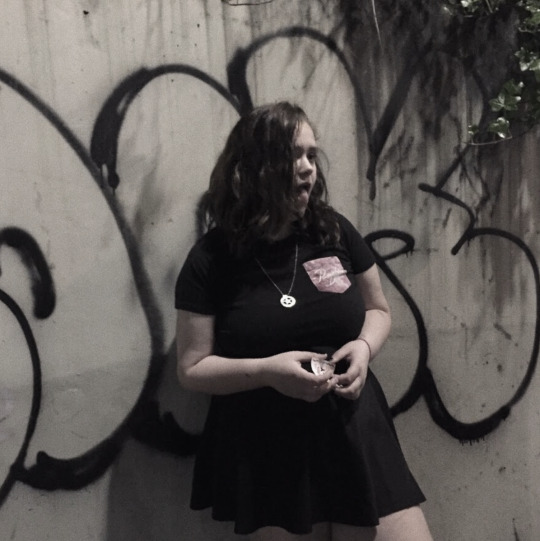
Josephine lives in Oregon, likes music and haunted houses, and spends her free time writing and making all kinds of art! She does many things for the zine, but primarily she is a media manager! She reaches out and recruits people to submit to the issue every month, on top of making sure all our social medias are up to date and sending out the Lame Kid emails! (@swjosephine on instagram)

Sal Fratto plays in the band Elephant Jake and is currently at Stony Brook University for English and Jazz Studies! He recruits bands for Lame Kid events and interviews artists in his free time! (@salfrotto529 on instagram)

Bianca Gabrielle is a communication & media studies student in Boston. She is a libra sun, scorpio moon, and sagittarius rising. She enjoys coconut milk lattes and making art. Bianca works on our website and produces online content. (@heybiancagabrielle on instagram)
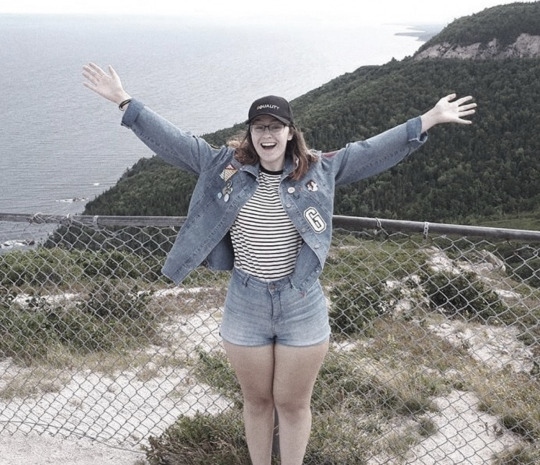
Gee is a 17 year old artist and songwriter. She owns @geecomics and @guillozine! As one of our art directors she is responsible for piecing together the final copy of the zine each month and deciding what we do and don’t use! (@gee.mp4 on instagram)

Olivia Thompson is from New Brunswick, Canada! She is a super visual person, which has left her with a strange interest in nearly anything that is nice too look at: movies, paintings, bathroom floor tiles. It has also manifested into a love of making art! In particular, painting and drawing. Olivia lays out our online content for our media managers to look over and post! She is the type of person who will always eat the cookie part of the fortune cookie because that makes it come true, probably. (@olivia_intheclouds on instagram)
0 notes
Text
Ken Heyman, 89, Dies; Collaborative Photographer With a Singular Eye
Ken Heyman, a leading photographer who worked with Margaret Mead, shot scores of assignments for Life magazine, collaborated with President Lyndon B. Johnson and endlessly sought new, revelatory ways of seeing the world, died on Dec. 10 at his home in Manhattan. He was 89.
His daughter Jennifer McCarthy confirmed his death.
Mr. Heyman first accompanied Mead, the noted cultural anthropologist, on a trip to Bali in 1957, and he took the photographs for “Family,” an acclaimed 1965 collaboration in which the two examined families around the world in images and text.
“The combination,” Jacob Deschin wrote in a review in The New York Times, “more integrated than is usual in word and picture associations, should make anthropology palatable for many who might never be inclined to pick up a book on the subject.”
The next year he collaborated with President Johnson on “This America: A Portrait of a Nation,” a book intended to illustrate Johnson’s “Great Society” initiatives. Johnson wrote the text.
Those two books were among more than 40 that Mr. Heyman published, either on his own or in collaboration with writers. Some were whimsical, like a series of children’s books with Ann Morris that took a global look at particular subjects (“Bread, Bread, Bread,” “Hats, Hats, Hats”). Others documented the grown-up world, like “Pop Art” (1965) and “The Private World of Leonard Bernstein” (1968, with John Gruen).
“Ken Heyman seems to use his skill and the photographic process to allow other people, his subjects, to make their own pitch about themselves,” an essay about him in the book “U.S. Camera ’62” said. “He doesn’t really take pictures of people and things (or, God forbid, grind out endless examples of his own cleverness). He photographs feelings and relationships.”
He would often do so from unexpected perspectives, a technique illustrated by “Hipshot: One-Handed, Auto-Focus Photographs by a Master Photographer,” a 1988 book of images shot with a cheap camera held at knee height, resting on the ground or otherwise positioned to capture an unusual perspective. Kelly Wise, in a review in The Boston Globe, called it “a book that almost hums with its own street sounds.”
Kenneth Louis Heyman was born on Oct. 6, 1930, in Manhattan to David and Ruth (Stein) Heyman. He first became interested in photography in high school, and once he enrolled at Columbia College he continued to pursue that passion, taking photographs for the campus newspaper, working late in the darkroom so often that he tended to sleep through his morning classes.
“I was put on scholastic probation,” he said in a 2012 video interview for the website What If It Really Works, “and during the Korean War those people were drafted.”
After two years in the Army, from 1952 to 1954, he returned to Columbia.
Studying to be a social worker, he tried one of the popular classes being taught by Mead. She invited students to include photographs with their final papers, and Mr. Heyman turned the invitation into a photo essay about boys he had been working with at a settlement house in Harlem.
“I got my first A,” he said, “and she called me into her office and said she wanted me to take her graduate course,” even though he wasn’t a graduate student. Not long after, she invited him to join her on a trip to Bali as her photographer, which he did after graduating in 1956.
Mr. Heyman had also begun going on assignments for Life magazine. In a 2014 interview with Sharpen, the online magazine of the American Society of Media Photographers, he explained how that came about.
“I was shooting a project for myself that I called ‘Broadway Islands,’ pictures of people around 112th Street, near Columbia,” he said. “I walked into the magazine’s office and showed them these images. They accepted the work and included it in their series known as ‘Speaking of Pictures.’”
He had essentially no formal photography training.
“The summer between my junior and senior year at Columbia I took a class at an art institute in the city,” he said. “I was kicked out because they thought I wasn’t serious enough. Working for Life magazine was my training ground.”
He ultimately shot more than 150 assignments for the magazine, he said. Other magazines to feature his work included Time and Look.
In 1975 Mr. Heyman collaborated with Mead, who died in 1978, on a second book, “World Enough.” He traveled all over the world photographing various cultures and customs, but he also photographed his share of household names, including Ernest Hemingway and Elizabeth Taylor. He especially liked to tell the story of one celebrity he met before he became famous.
In 1959 he paid a young artist $400 to paint a bathroom in his apartment. The resulting paint job included a tree, cherries, butterflies and two cats, one on the toilet seat. The painter was Andy Warhol.
A few years later, by then well known, Warhol was more than accommodating when Mr. Heyman asked to photograph him for the “Pop Art” book. But Mr. Heyman moved out of the apartment building without ever capturing the Warholian bathroom on film, and the building later burned down.
Mr. Heyman’s marriages to Wendy Drew and Brenda Redmond ended in divorce. In addition to Ms. McCarthy, from his first marriage, he is survived by his wife, Judith Raboy, whom he married in 1998; another daughter from his first marriage, Amanda Silverman; three sons from his first marriage, Tim, Chris and Jason; two stepdaughters, Sara Raboy Hanley and Amanda Raboy Lewis; and 16 grandchildren.
Mr. Heyman frequently taught or spoke to classes, including in elementary schools. He would sometimes pose a question to schoolchildren: If you had a third eye, where would you put it? It was a question that, he thought, had a correct answer.
“Most of them said in the middle of the forehead and that sort of thing,” he recounted in the 2012 video interview. “But the answer is, in the middle of the palm of your hand. Because you could look underneath things, you could look behind you.”
Sahred From Source link Fashion and Style
from WordPress http://bit.ly/36JPwvt via IFTTT
0 notes
Text
Boston Public Garden Senior Session | Boston MA Senior Portrait Photographer
Boston Public Garden Senior Session | Boston MA Senior Portrait Photographer
Senior portraits are a really special type of photo session. They’re a celebration and a way to share who you are beyond a school desk. This incredible senior lives in Maine now, but came back to Boston for his senior portraits. Since he’s homeschooled, it was a fun way to capture his portraits since his family used to live in Boston! I love that – find a location that really speaks to you when…
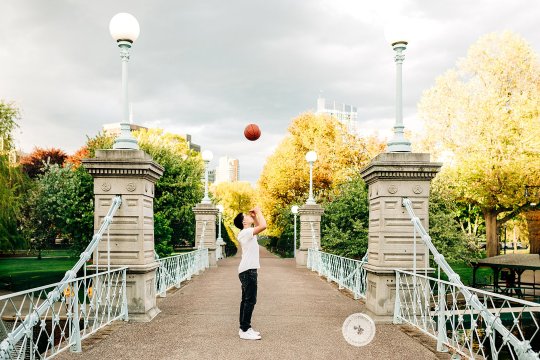
View On WordPress
#bostonseniorportraitphotographer#dedhamseniorphotographer#highschoolseniorsphotographer#newtonseniorsphotographer#seniorphotographer#seniorphotographerdedham#seniorphotographerinboston#seniorphotography#seniorportraitsesion#Seniors#seniorsession#Boston Public Gardens#senior#senior portraits
0 notes
Text
COVID-19 and Finality
As an emerging artist, one of my challenges is knowing when a project is over. What exactly does done look like? When is something finished exactly?
I was grappling with this question when COVD-19 hit. My work for my thesis exhibit was focused squarely on the intersection of illness and beauty. I had been using hospital gowns and other medical equipment to illustrate the long and tender link between illness and fashion with most of the work having been done in late 2019—when it was still warm enough to photograph myself outside in a series of self-portraits in the gowns.
By March 2020 when the pandemic took hold, my art supplies suddenly became critically needed hospital supplies. In my basement, I had a few boxes of isolation gowns that had been purchased months before the storm over COVD-19 broke. I quickly dropped those off with a neighbor who is a nurse at Children’s Hospital Boston. From her and from the media, I learned that there was a tremendous shortage of masks.
I had a box of pediatric isolation gowns that would not be useful for protection because they were styled without sleeves. Those were ideal for mask-making since they were created out of a fabric made to repel droplets of moisture. Where once I had used my sewing machine to make highly stylized party dresses out of hospital gowns, now I was working as if I was in a factory. Efficiency and precision replaced artistry as I turned this medical grade fabric into masks.
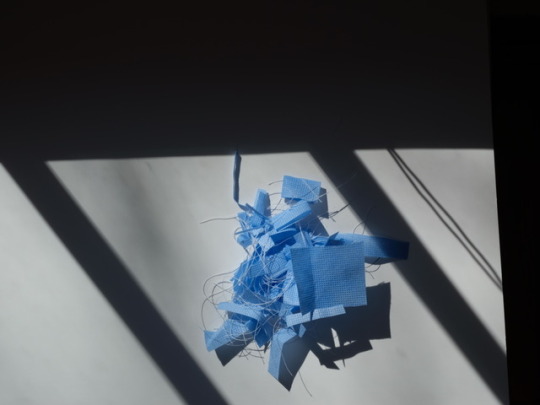
My learning during this phase of the project was multifold. While I had originally used my sewing machine and materials to make a prototype for a ball gown made from recycled hospital gowns, my task during this phase was different. No longer was I designing for photographic appeal, instead I was designing for effectiveness.
In the past, I was free to experiment and squander my resources at will—the gowns themselves cost only a few dollars. Now the gowns were precious and needed to be used as efficiently as possible. I struggled with coming up with a pattern that would use the gowns most efficiently. I had to learn how to batch process. Materials were scarce, I did not have elastic for example, so I had to hand sew the ties. To date, 46 face masks in various sizes have gone to nurses at Children’s Hospital—including small ones for patients.
That left only fabric hospital gowns in my basement. These were inappropriate for nurses, but particularly useful for those who are immune impaired or have lung issues. For these, I repurposed the fabric hospital gowns, I had been storing in my basement. Cotton can be washed, and the virus has been shown to die quickly on fabric.

I have to say that washing, bleaching, cutting and in some cases just tearing into the gowns was cathartic. Hospital gowns are emotive items for those of us who have both been ill and cared for family members with illness. They have their own language. Some gowns exist as barriers—such as isolation gowns. There are gowns the exist to protect immune impaired patients from whatever we might bring into the hospital room from the outside world. Gowns that open in the front, on the other hand, are used for mammograms. Gowns that have numerous holes lend themselves to the constant monitoring and use of ports, catheters and other medical equipment often encountered on a long hospital stay. And then there are color coded gowns that alert hospital staff to patients suffering from mental illness.
I would use the fabric for a dozen or so fabric masks for elderly neighbors, family and friends. These I aestheticized out of necessity. Lacking elastic, I found that fabric Christmas ribbons I had ordered months earlier, were strong enough to use. I also cut the ties off the gowns and used those for ties on masks.
I once heard an art history professor say that DaVinci actually had an early kind of resume in which he listed his skills. His commercial skills came first. His artistry—the things we remember him for—came last.
And maybe that’s the lasting lesson for me here. Under normal circumstances, I don’t know when a work is done, not mine at any rate. But this much I know: when, during a plague, art must enlist itself in the service of others, it is never done.
Nancy A. Nichols is a writer, editor and photographer. A former senior editor at The Harvard Business Review, she is the author of Lake Effect: Two Sisters and a Town’s Toxic Legacy.
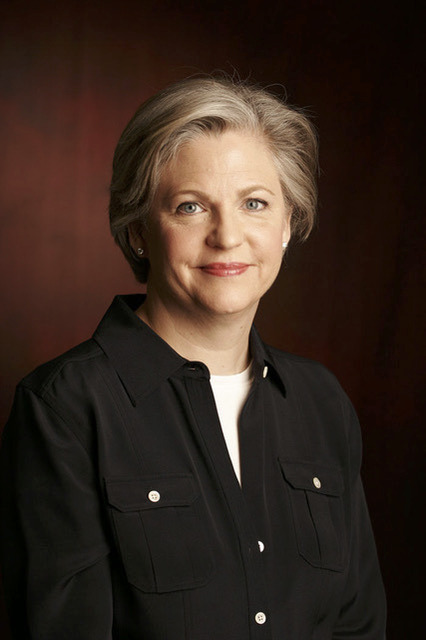
https://www.instagram.com/nnabc/
About the LHNE Collective
5 notes
·
View notes
Text

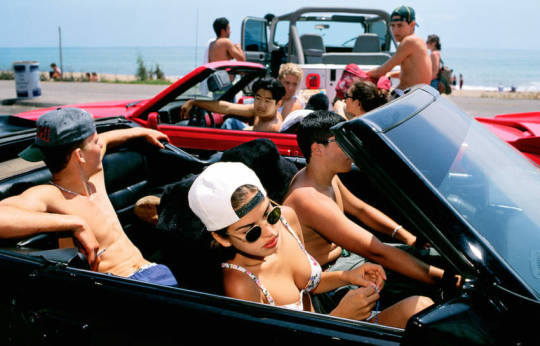


Megan Taylor
Lauren Greenfield: Extreme Wealth and Female Stereotype’s Influence on America
“I often Look at the extremes to understand the mainstream,” says artist and photographer Lauren Greenfield in her latest film, Generation Wealth, which examines obsessions with wealth, status, youth and beauty. Lauren Greenfield was born in Boston, grew up in Los Angeles, and graduated from Harvard University with a B.A. in visual and environmental studies in 1987. She worked as a photojournalist based in Los Angeles and London, publishing work in National Geographic, Time, Newsweek, The New York Times, and others. Her photographs have been widely published and exhibited and are in many museum collections including the Art Institute of Chicago, the Paul Getty Museum, the Smithsonian National Museum of American History, and more. In 2012, she received one of the highest honors in documentary film, the Sundance Film Festival Directing Award, for her documentary film, “The Queen of Versailles”. In 2003, American PHOTO Magazine named her one of “The 25 Most Important Photographers Now”. She has received numerous other titles, awards, and grants.
The acclaimed documentary filmmaker and photographer has been working for the past twenty-five years to chronicle the global obsession with wealth and materialism in the series “Generation Wealth”. Remarkable in scope and depth, Greenfield’s photographs explore the desire for more, and it succeeds in revealing gender dynamics, cult of celebrity, consumerism, power, and their eventual consequences. Greenfield witnessed firsthand the pervasive effects spread across the nation, reaching every corner of America. Greenfield photographed mega mansions, luxury hotels, private parties, beauty pageants, and designer bags that began to symbolize wealth, success and fulfillment in the United States. The series goes as far back to her days shooting the wealthy teenagers in her hometown of Los Angeles. (At one-point Greenfield captured a young Kim Kardashian attending a school dance.) The subjects span at least three continents and include a Las Vegas casino hostess, a Botox-obsessed hedge-fund investor determined to have a baby, a high-priced etiquette teacher for Chinese women, and the debutante daughters of Russian oligarchs. The two most prominent photographs in this series are of, Mijanou, 18, who was voted “Best Physique” at Beverly Hills High School on Senior Beach Day, Santa Monica, California, 1993, and A 49-year-old patient recovering from a full-face laser resurfacing and upper eye life, eating lunch in a private room at Serenity, a luxury aftercare facility that offers private chefs and spa treatments, Santa Monica, California, 2006. Although the photographs themselves are wonderfully shot, developed and printed, there is no real analysis to be made, and there is no clear focus. The photographs themselves are very reliant on a range of interview subjects who get what increasingly looks like fetishizing and grotesquefying treatment. All of these people are clearly symptomatic of something, but “Generation Wealth” is so choppy and uncertain, I’m unsure of what that might be. The photographs ping-pong between such different subjects, the connection between them is unclear. What does former porn star Kacey Jordan have in common with the bus driver who spend all of her money flying to Brazil for cheap (and regrettable) plastic surgery? And what do the two of them have in common with a young star from the reality show “Toddlers and Tiaras,” who was essentially worshipping money at three years old?
Lauren Greenfield’s series, Girl Culture, released in 2002, was a strikingly honest look at girls and young women across America. Similarly, to Generation Wealth, Greenfield photographed the way girls are influenced not by wealth, but by pop culture and how that influence affects their self-esteem. The images cover subjects ranging from eating disorders to popularity, and the real-life cast of characters include pageant princesses, self-harmers, spoiled rich girls and loners. Over 100 pictures are accompanied by 18 interviews in her book published with the same title. In an interview upon the book’s digital release, Greenfield explained, “I started with high school kids. My original intention was a very small project about high school and as it became clear that I was interested in this early loss of innocence, I kept going younger and younger because it was more dramatic and more king of poignant the younger I got.” With the photos vivid, almost gaudy color palette, it is both a celebratory and sympathetic look at the isolation, joy, and frivolity of being a girl. With subjects such as an overweight girl in a yellow shirt struggling to reach her leg in a stretch during a weight-loss camp aerobics, to two ballerinas with impossibly long legs resting gracefully in the splits, the photos show the gritty, gorgeous, and often unsettling lives of girls. Her photos range from capturing strippers, to schoolgirls to Southern belles to anorexia victims that challenge pop culture’s beauty and body images. Lauren Greenfield offers us a world where the desire towards beauty and sexiness has become all encompassing. In pictures alive with vibrant colors, the emotions and thoughts beneath the subjects are intensified.
Greenfield finds beauty in disquieting and illuminating portraits which exhibit common motifs of sadness and disillusionment. Perhaps most powerful, however, is that she offers no judgement and rather lets the photos speak for themselves. From the pressures of growing up too fast to a desperate need for wealth, her subjects find their own desires overpowered by the expectations of popular media. Even without the social commentary, Greenfield’s photos are phenomenal works of art that resonate deeply with the viewer. Her messages are powerful and worth hearing, despite the in-cohesiveness of the subject matter. Girl Culture and Generation Wealth force the viewer to look at some ugly truths about American Culture and femininity and power, when it seems easier to look the other way.
“Generation Wealth.” Generation Wealth, www.generation-wealth.com/.
Greenfield, Lauren, and Joan Jacobs Brumberg. Girl Culture. Chronicle Books, 2017.
Greenfield, Lauren, director. Generation Wealth. 2018.
Greenfield, Lauren. Los Angeles, 2008.
“Lauren Greenfield.” Wikipedia, Wikimedia Foundation, 13 Nov. 2019, en.wikipedia.org/wiki/Lauren_Greenfield#Generation_Wealth.
“Transcript: Lauren Greenfield, Photographer, on ‘Girl Culture’: Apr 17, 2004.” TVO.org, www.tvo.org/transcript/889132/lauren-greenfield-photographer-on-girl-culture.
0 notes